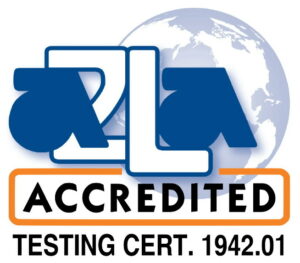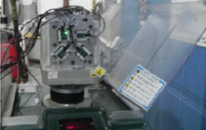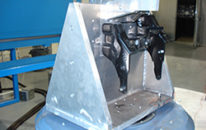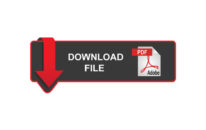Vibration Testing
That device on which you need to perform vibration testing will spend its lifetime in different environments. Because these environments exhibit unique vibration profiles, we use vibration control techniques tailored to each environment.
Our vibration controllers can control with sine, random, sine-on-random or narrow band random-on random control strategies.
Since vibration testing has been used for the longest time because generator-based sine wave output controllers were the simplest to build. Unfortunately, sine vibration has few real-world parallels. But sine vibration is still useful for experimentation and for determining resonances.
A more accurate simulation of many real-world conditions is achieved with random vibration control. Random vibration testing subjects the product to all of the frequencies within a band of frequencies. A typical random vibration control strategy will shape the vibration energy profile (power spectral density – PSD) to correspond with frequency distribution of the in-use environment.
Sine-on-random vibration testing superimposes a sine vibration signal onto a random signal to simulate helicopter or aircraft gunfire environments. Multiple sine frequencies can be superimposed at one time and the sine tones can be swept throughout the spectrum.
Narrow band random-on-random vibration testing superimposes a sweeping narrow band random vibration signal onto a random vibration signal to simulate the track patter of tracked vehicles.
Clients with HALT reliability testing requirements can combine a rapid temperature ramping environment along with vibration testing in an AGREE chamber using temperature transition rates as high as 20°C per minute.
Where clients do not have their own vibration fixtures, we can design, fabricate and qualify a vibration fixture using our in-house vibration fixture team. Many times this internal capability has saved our clients time and cost by not having to source separate suppliers for testing, design, fabrication and fixture qualification.
In addition to the vibration fixtures, we also designed and fabricated a custom head expander as well the supplementary support system and integrated both with the shakers existing package support system.
Vibration Testing Equipment
Testrium makes it easy for you to complete your vibration testing project with an assortment of vibration testing equipment. Because we have multiple shakers, this means we can usually schedule your vibration test within a short period of time of you contacting us.
Shakers
- Frequency Range: From DC up to 3,000 Hz
- Displacement: 50 mm maximum
- Product Weight: 455 kg with supplementary support
- Acceleration: 100 g maximum
Controller
- Input Channels: 16 accelerometers maximum
Data Acquisition
- Channels: 10 accelerometers maximum
AGREE Chamber
- Temperature Range: -70°C to +120°C and up to 95% RH
- Ramp Rate: 20°C per minute max.
- Largest Inside Dimensions: 1.37 m L x 1.37 m W x 1.00 m H
- Door Opening: 1.37 m W x 1.00 m H
Vibration Testing Methods
The detail requirements which describe your vibration testing project are usually found within standard test methods. These methods are tailored to meet the requirements of different industries. Paragon Systems technical staff are experienced with automotive, rail transport, electronics, military and shipping test methods.
American Railway Engineering and Maintenance-of-Way Association (AREMA)
AREMA Part 11.5.1
ASTM International
ASTM C192 / C192M, ASTM D395, ASTM D4169, ASTM E587, ASTM D999, ASTM D4728, ASTM D4169
BellCore Telcordia
BellCore GR-63-CORE 5.4.2, 5.4.3
British Standards Institute
BS EN 60068-2 Series (-6, 50, 51, 53, 64), BS EN61373, BS EN 50155
California OSHPD Code Application Notice (US)
CAN 2-1708A.5
Defence Standard (UK)
DEF STAN 00-35, DEF STAN 08-123
Institute of Electrical and Electronics Engineers
IEEE 344, IEEE 693, ASCE 7-10, AC 156, GR-63-CORE
International Code Council
ICC AC-156
International Electromechanical Commission
IEC 68-2-59, Test Fe, IEC 68-2-26, IEC 68-2-34, Test Fd, IEC 68-2-35, Test Fda, IEC 68-2-6, IEC 60068-2-64, Test Fc, IEC 61373, IEC 60945, Section 8.7, IEC 60079-29 (-1, 4)
International Organization for Standardization
ISO 1940-1, ISO 10816-1/6, ISO 16750-3
International Safe Transit Association
ISTA 1B, ISTA 1C, ISTA 1E, ISTA 2A, ISTA 2B, ISTA 2D, ISTA 3A (3C,3D), ISTA 3F, ISTA 3G, ISTA 7B, ISTA 7D
Japanese Industrial Standards
JIS D 1601, JIS E 3014
JEDEC Solid State Technology Association
JESD22 B103B
General Motors Worldwide
GMW 3172
Military Standard (US)
MIL-STD- 167, MIL-STD-202 E/F/G (Method 201), MIL-STD-202 E/F/G (Method 204), MIL-STD-202 E/F/G (Method 214), MIL-E 5272, MIL-STD-810 E/F/G (Methods 514, 519), MIL-STD 883 G/H (Method 2005), MIL-STD 883 G/H (Method 2007), MIL-STD 1344 A Method 2005)
Netherlands Standardization Institute
NEN-ISO 10326
Radio Technical Commission for Aeronautics
RTCA DO-160 E/F/G, RTCA DO-227 6/23/1995 Sec. 2.3.1
SAE International
SAE J575, SAE J1211, SAE J1455, SAE J1810
United Nations Recommendations on the Transport of Dangerous Goods
UN ST/SG/AC.10/11/Rev.5 Para. 38.3.4.3
Verein Deutscher Ingenieure
VDI 2057-1,2, VDI 2059-1,3,4,5
More From Paragon Systems
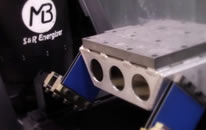
BSR Testing
Annoying vehicle noises in vehicle interiors occur when incompatible contacting …


